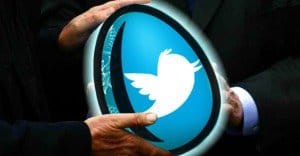 Written by ContentPowered.com
Written by ContentPowered.com
Hashtags are trivial to create and incredibly easy to use, but they’re also surprisingly difficult to use properly. To create one, all you need to do is put a # before any word or phrase. #MakingHashtags is now a hashtag, if this post was on Twitter. Hashtags serve as easy categories to follow a conversation, so you need to treat them as such.
Before you try to use hashtags for your brand, however, you need to consider a few things.
- Is the hashtag you’re using new? If so, be aware that you’re creating the conversation for scratch. This is perfect if that’s your intention. Otherwise, you may want to investigate existing hashtags – by searching for them, easily enough – to join in an existing conversation. Of course, if you’re trying to start a new conversation, you can do it with a hashtag that’s already in use.
- Remember that your hashtags should be short. When you’ve only got 140 characters to work with, you can’t waste 20 of them on the hashtag.
- Avoid using emotionally charged phrases as hashtags unless it’s a very common sentiment – in other words, don’t put words like love and hate into your users mouths.
- Think your conversations through before you begin the campaign. If your brand is long-established and has a few sensitive topics, those may be topics to avoid. Avoid giving your users a focus for their negative stories and experiences.
- Never hijack tragedies or civil unrest tags to advertise your brand. You’ll come off as crass at best; at worst, the backlash will devastate your brand.
So, how can you actually use hashtags to benefit your brand?
1. Create a General Business Tag
The first way to make sue of a hashtag for your business is to establish a couple specifically for contacting your business. A branded tag or two works great for getting your attention when a user mentions you. For example, a specific #BusinessnameCS for customer service issues can be beneficial while still promoting your brand name.
Users can mention your brand username in tweets and you will be notified; this is a @mention rather than a #hashtag. It works to get your attention, but it doesn’t quite unify conversation in the same way a hashtag does. You can create a similar hashtag to accumulate business conversation that doesn’t fall under one of your other hashtags.
2. Create Special Event Tags
This will be the largest part of your business using hashtags. Every time you come up with an ad campaign, create a hashtag to support it. This way, users of your website, blog, Facebook profile and other such accounts will be able to associate with the ad campaign on Twitter.
This works for both overarching ad campaigns and for Twitter-specific ad campaigns. Obviously, any tag you create will be unique to go with the campaign; you can’t hijack and existing tag to use your campaign, particularly if that tag is currently active. The people using that tag – and the brand that created it, if such a brand did – will look poorly upon the intrusion.
3. Follow and Join In on Industry Tags
Part of building a brand online is establishing yourself as an authority in your industry. To do this on your blog, you post insightful content and posts relating to issues and news in the industry. To do it on Facebook, you network with users and other businesses in your industry and join in on their conversations. To do it on Twitter, you need to figure out what the common industry hashtags are and join in the conversation.
Note that most of this isn’t about advertising. You aren’t looking to post links to your contests and advertising in these ongoing conversations. Doing so can come across as spam and will be frowned upon. Instead, what you want to do is use the opportunity to post insight and respond to questions posed by other industry veterans. Beyond that, you want to post your own questions and gain the input of other industry leaders.
This is also a great way to discover the influential figures in your industry and follow their Twitter profiles. Ideally, they will follow you in return, increasing your network and your reach. This part is all about gaining an audience to use your hashtags on later.
4. Run Tag Retweet Promotions
You can use all sorts of advertising techniques on Twitter, but the platform itself offers a few unique opportunities. One of these is the retweet counter promotion.
The idea is simple and can be found on other sites for other purposes, from Facebook Like-based promotions to Kickstarter stretch goals. Essentially, you evaluate how much activity each of your tags typically gets. Once you know this number, set a similar or higher goal and announce a prize that will be unlocked or given away if that goal is reached. For example, you can offer discounts on your products at a certain level. If that level is reached easily and activity continues to climb, offer another goal at a higher tier. This can go on indefinitely, as long as you have the rewards to give away.
You can offer other prizes beyond discounts for your tweet goals. You can create a hashtag and give a free item to someone who retweets it. If it gains more activity than expected, you could give one out for every 1,000 retweets, or whatever threshold sounds good to your business. This all increases engagement, gets you more followers and can make your hashtag trend.
5. Use Tags for Contest Submissions
Twitter hashtags are a great way to accumulate submissions for other contests as well. A simple contest idea would be to give away a product to the person who submits the best picture of them in a situation of your choosing. Establish a tag for the contest and ask users to submit through Twitter using that tag. This can get your tag trending quickly, it keeps all submissions in one easy to view location and it can be used in other ads for the contest elsewhere.
In the end, hashtags are limited only by your creativity and the saturation of users already creating tags. As time goes on, it will be harder to use common words and phrases as tags. You’ll need to stretch your creative muscles to come up with interesting tags that are still short enough to work. What this means is that now is the best time to create tags for your business. Get to work now and build your Twitter presence before the barrier to entry gets too high.






Very creative ideas, Eric. I’m going to hop on the bandwagon and create a new hashtag for my business 🙂
piggybacking off already-established hashtags is a great idea. do you recommend putting your hashtag along with the popular one to give it more visibility im assuming?